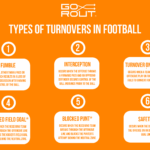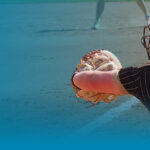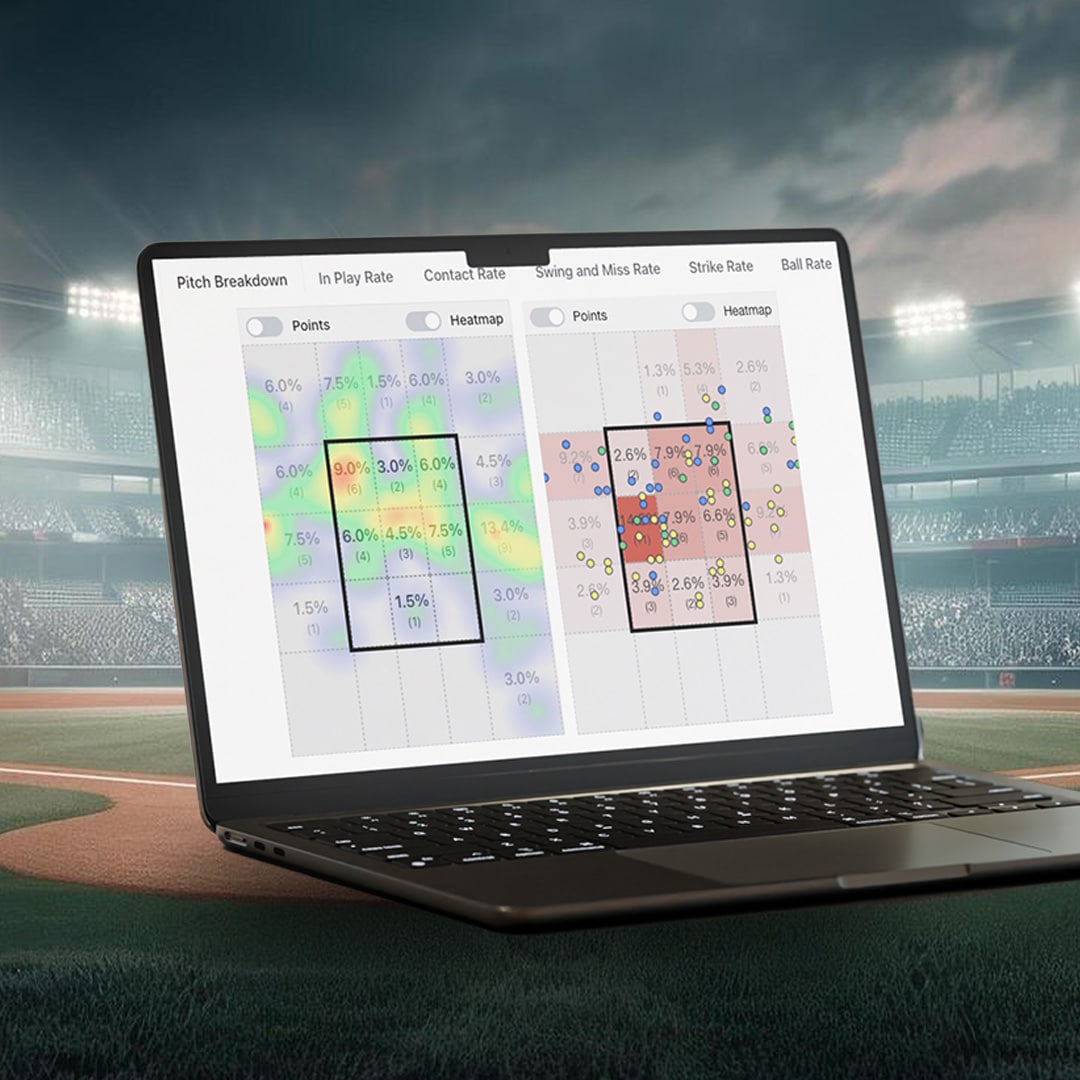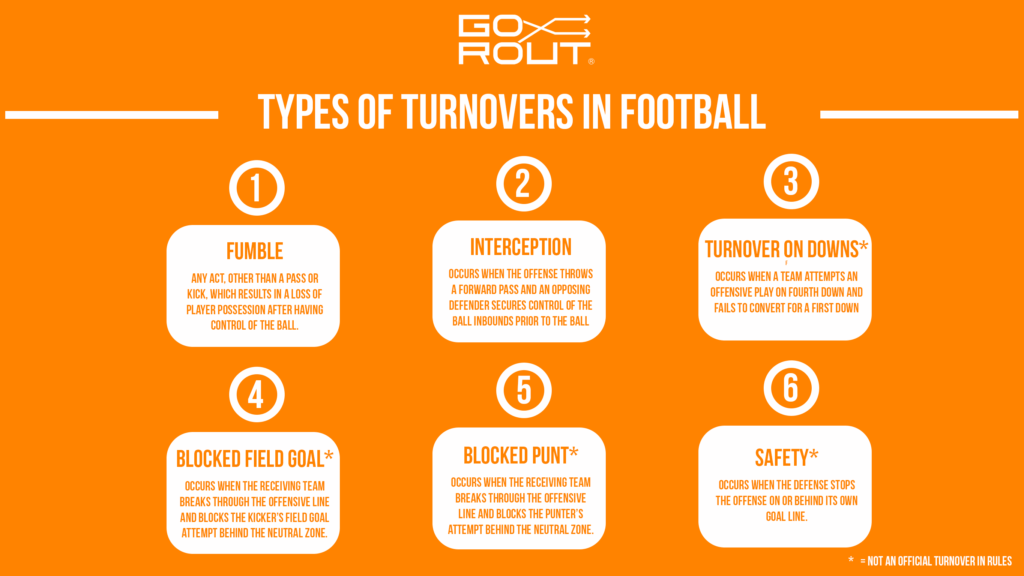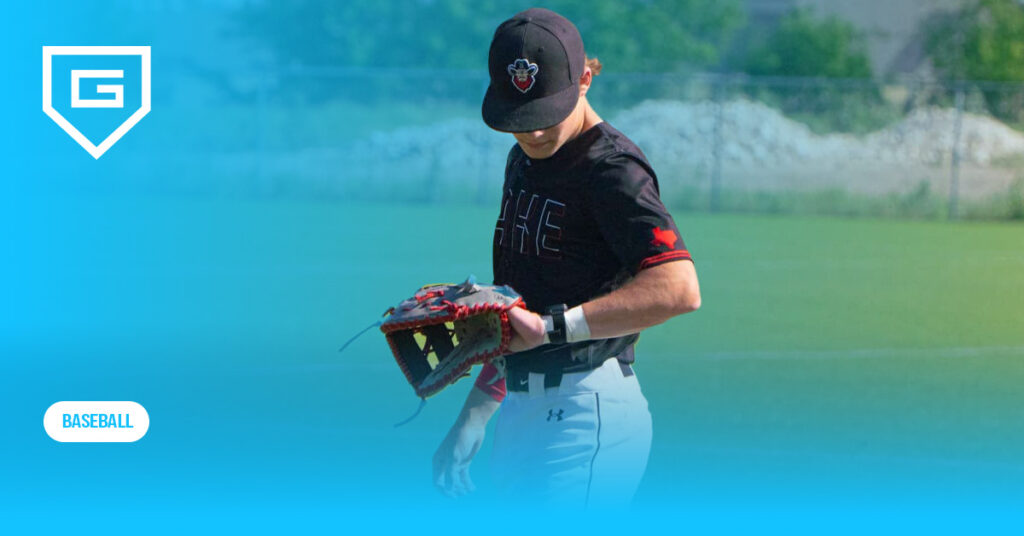Baseball Communication Device: All You Need to Know in 2025
Reading Time: 11 minutes
Reading Time: 11 minutes
Baseball used to rely on hand signals, but in 2025, you don’t have to guess anymore.
A baseball communication device gives you instant, secure, and clear pitch or play calls right on the field. This game-changer lets your team play quicker and stay focused with an advanced system that enhances performance and compliance.
From Major League Baseball down to high school, these systems are everywhere now. With tech like GoRout Diamond, communication has shifted from old-school signs to precise, digital calls.
Let’s look at how these gadgets work, what they do for players and coaches, and a few tips for using them well. You’ll also get a sense of how they support player growth and what rules shape their use at different levels.
Key Takeaways
- Secure signals stop sign-stealing and keep your team’s strategy safe.
- Faster game flow reduces mound visits and speeds up pitch decisions.
- More efficient communication than traditional visual signals reduces errors and streamlines in-game decisions.
- Wearable tech like wristbands, earpieces, or smartwatches makes communication simple.
- One-way systems approved by MLB and NCAA ensure compliance with rules.
- AI and data tools help track pitch sequences, workloads, defensive shifts, and other useful information.
- Durable designs withstand weather and provide long battery life for full games.
- Top-tier performance systems offer advanced features, multi-channel capabilities, and professional-grade reliability for serious teams.
If you want a reliable option, GoRout Diamond has a coach-friendly setup with encrypted signals, bright wrist displays, and batteries that last all game.
You can build custom playbooks and send quick updates, keeping things moving.
Get a quote or check out the web shop for team packages.
The Basics Of A Baseball Communication Device
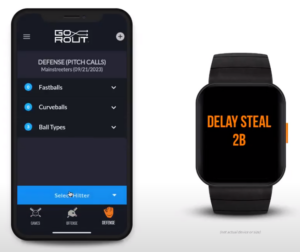
A baseball communication device is a digital system that allows coaches to send pitch calls directly to players without using hand signs.
This electronic pitch calling system gives baseball teams a faster, smarter and more secure way to communicate on the field.
It eliminates confusion and speeds up the game while making sign stealing impossible. Because the information is digital, players can stay focused without worrying about missed signals or miscommunication.
The technology is designed for baseball, with rugged, weather-resistant wristbands built for game day.
Coaches can update calls in real time so strategy adjustments happen seamlessly.
Depending on league rules, the system can connect multiple positions to receive the same call at once, so the entire team can adjust and execute plays in sync.
Benefits Of Using A Baseball Communication Device
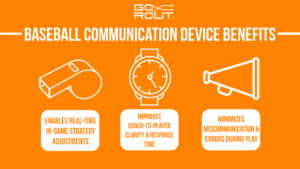
Baseball communication devices deliver uninterrupted communication, so your players can get pitch calls fast, with no waiting around.
It enables real-time game strategy adjustments, allowing teams to react instantly to dynamic situations on the field. No more mound visits or slow hand signals, decisions happen right away.
Everyone can get the same call at once, so you don’t have to repeat instructions. It makes the practice or game flow smoother.
Improving coach-to-player clarity and response time
Clear communication ensures every player knows the call. There’s no guessing or missed signals.
Instead of trying to read hand gestures in a noisy ballpark, coaches send instructions directly to players’ devices. It gives you real-time info, so everyone knows what’s going on.
These devices are easy to use, allowing players to concentrate on making the play instead of figuring out complicated signs. With wearable tech giving real-time updates, athletes can stay focused and be ready for each pitch.
Minimizing miscommunication and errors during play
Hand signals can get stolen or mixed up. A secure device sends encrypted signals just to your team, protecting your strategy.
Reliable tools mean fewer mistakes, with fewer missed pitch calls and less defensive confusion.
These devices ensure reliable communication during critical moments, so that coaches and players stay connected when it matters most.
That keeps the game rolling and performance steady.
Optimizing Communication In Baseball With GoRout Diamond
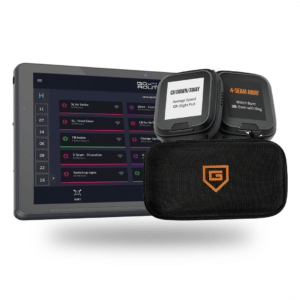
GoRout Diamond is a baseball pitch-calling system that provides direct communication between coaches and players with no lag. The system uses a cellular network, so you don’t need WiFi or routers—no syncing headaches.
Pitch calls, defense shifts, whatever you need—it’s all encrypted and private. Your strategies stay safe, and communication flows across the field.
User-friendly interface for baseball & softball teams
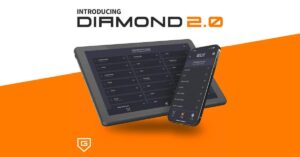
The platform keeps coach-to-player communication simple.
Use the web app to build your playbook. Tap the mobile app once to send pitch calls, defensive setups, or offensive plays instantly. Players get clear instructions on bright screens that work day or night.
You can start with one device or scale up for the whole team. It’s easy to fit the system to your roster and budget.
Durability and reliability in game conditions
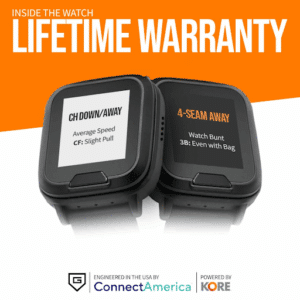
These pitch-calling devices work in any weather—heat, rain, snow, or humidity. The displays stay readable, even in direct sunlight.
Each device comes with a full-coverage warranty for breakage.
GoRout helps teams responsibly manage technology by offering comprehensive support and warranty options, ensuring long-term reliability and responsible usage.
You get peace of mind, and with reliable hardware, your team can focus on playing, not fixing gear.
Visit the web shop for more details.
“We have been thrilled with the addition of GoRout to our program. It has streamlined our in-game communication with our players and been extremely easy to use on our end as coaches. Simple setup and easy delivery. We would highly recommend GoRout to anyone.” – Coach Adam Core, Lindenwood University (2025)
How GoRout Diamond Improves Your Team Performance
Real-time communication is at the heart of GoRout Diamond.
Coaches can send secure calls directly to the team’s catcher through digital wristbands.
Forget confusion, slow decision making, and uncertainty. Coaches can focus on performance, not on interpreting coaching signs.
Signal changes and adjustments during the game
Baseball is a game of adjustments. With GoRout Diamond, coaches can update signals mid-inning, whether it’s a pitch call, defensive shift, or situational play.
Players get the change on their wristbands in real time. Teams can adapt quickly without slowing down the game.
It keeps strategy sharp while maintaining a level playing field against opponents.
Clear instructions for the pitcher
Pitchers perform best when they know exactly what’s expected. Clear, direct instructions from coach to catcher to pitcher reduce hesitation and build trust.
By removing the guesswork of hand signs, pitchers can stay focused on execution, improve accuracy, rhythm and overall performance.
This clarity is especially valuable in education-based athletics, where developing confidence and consistency is key.
GoRout Diamond success stories
Across youth, high school and college programs, GoRout Diamond has become a trusted sports communication system to help teams perform.
Coaches are reporting smoother practices, faster in game adjustments and more confident players.
Take a look at these testimonials and case studies to learn more.
From pitcher-catcher chemistry to defensive strategy, success stories are showing how seamless communication changes the game.
Get a quote or visit the online shop today.
“GoRout has been absolutely elite when it comes to their hardware and software. The addition of their products has taking our in game communication to the next level. Their customer service is first class when it comes to troubleshooting and solving problems. We are proud to be partners with GoRout.” – Coach Lance Ratchford, Marist College (2025)
How Baseball Communication Devices Support Player Development
Baseball communication devices give players instant feedback from coaches, right during practice or games.
Forget waiting until the inning is over. They get guidance right away, so they can improve performance on the spot.
Pitchers can fix their baseball pitch grips or timing, and catchers get reminders about pitch selection or positioning. It’s a lot more helpful than reviewing it all after the fact.
Encouraging teamwork and player confidence
These devices take the confusion out of signals for pitchers, catchers, and fielders. When they know exactly what’s coming, they can focus and execute.
This kind of clarity builds trust, and younger players get more confident fast. A reliable baseball signals system also makes learning team strategies less overwhelming.
Tracking progress and performance analytics
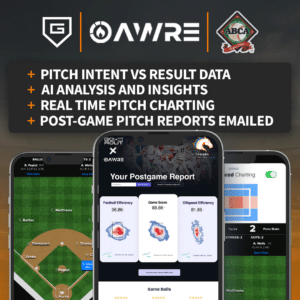
Some systems like GoRout Diamond let you review pitch calling patterns or defensive plays. You can see what’s working and what needs improvement.
Pitchers might spot trends in pitch success, while catchers track how well their calls match game results. It’s a good way to measure growth over the season.
“GoRout has been tremendous for our staff and program. It has streamlined our communication between the coaching staff to the pitch/catcher as well as the fielders behind. The ability to send out positional based shifting and having the whole defense on the same page, and adjust those messages on the fly is invaluable.” – Coach Ford Ladd, Georgia Gwinnett College (2025).
Applications Of A Baseball Communication Device
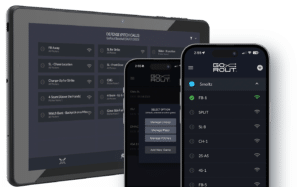
You’ll spot these devices everywhere now, from youth leagues to the pros. High school and college teams also benefit.
The NCAA now allows the extended use of one-way communication, making it easier to manage offensive signs and defensive signals without hand signs.
State high school associations and the national federation (NFHS) permit electronic communication devices from the dugout to catchers. It set standards for device use to ensure fair play and compliance with regulations.
The NFHS board and the baseball rules committee regularly update and enforce rules regarding communication devices in high school baseball, promoting proper integration of technology in the sport.
Implementing A Baseball Communication Device In Your Team
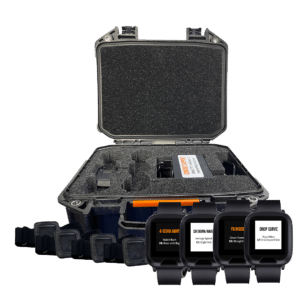
Start by making sure everyone knows how the device works. Walk through the setup in the dugout, and let players practice receiving signals before game day.
Short, hands-on sessions work better than long talks. Run drills where just the catcher gets signals, then add pitchers and fielders as you go. Step by step, you’ll build comfort and trust in the system.
If you’ve got younger players, keep the instructions simple and repeat key steps. This way, they can focus on having fun and not stress about any missed calls.
Integrating GoRout Diamond into existing team workflows
If you want to get the most out of a device like GoRout Diamond, connect this baseball equipment to routines you already use.
Don’t ditch hand signals entirely. Try pairing digital calls with traditional baseball coaching signs during practice.
Communication stays quick, and you won’t slow down the pace. Plan for battery checks and charging as part of your pre-game routine.
A simple checklist helps make sure every unit is ready so you’re not scrambling during a doubleheader. Small habits like this turn the technology into something you can rely on all season.
“GoRout has enhanced our program, communication and the chance to win more than ever before. We are proud to partner with GoRout and the best service team around in the game.” – Coach Aaron Klotz, Adrian College (2025).
Troubleshooting And Maintenance Tips For Longevity
You might run into weak signals, frozen screens, or delays in pitch calls. Most of the time, restarting the device or checking the connection between the coach’s sender and the catcher’s receiver solves it.
Device care and battery management
Keep your devices clean. Use a soft cloth for screens and ports, and try to keep moisture and dust away.
Battery life matters, especially for long games. Charge devices with the right cable. Avoid overcharging and store them at room temperature to protect the batteries.
Simple habits to improve battery longevity:
- Charge before each game, not overnight.
- Switch off devices when not in use.
- Carry a backup battery pack for doubleheaders.
Accessing support and updates from GoRout
Keep your software current so your device stays dependable. GoRout releases updates that fix bugs, boost speed, and add features.
Install these before the season starts. If you’re still having trouble, GoRout’s support team can help with troubleshooting guides or replacement parts.
Legal And Ethical Considerations
You’ve got to follow your league’s rules when using baseball communication devices.
MLB, NCAA, and NFHS now allow one-way devices for pitchers and catchers, but there are limits on how many transmitters and receivers you can use.
Rules change by state or age group, so always check with your governing body. That way, your team stays compliant and avoids issues.
Ensuring fair play and sportsmanship
Technology should keep things fair. Devices cut down on sign-stealing, but there’s always a risk of someone looking for an edge.
Set clear team guidelines. Make sure devices are used for approved reasons, and keep backup methods, like hand signals, ready in case tech fails.
Respecting privacy and data security
Digital tools mean you have to protect team data. Encrypted communication helps, but you should still secure devices and train your staff on safe use.
Think about who can access your system and how you store info. Good cybersecurity keeps your players’ details safe and lets you focus on the game.
The Future Of Baseball Communication Devices
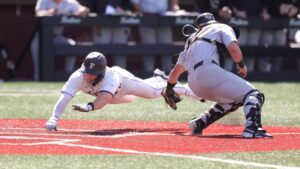
Baseball communication devices are getting faster, smarter and more secure for in-game communication. Here’s what’s to come:
- Real-time communication: Calling pitches will expand to the entire team. More positions beyond the pitcher and catcher may be added so entire defenses can get calls in real-time.
- Analytics integration: Devices will connect to performance data so coaches can adjust strategy based on pitch success rates or player tendencies in real-time.
- Customization: Systems will offer language, pitch types and defensive alignments for each program’s unique style.
- Education-based athletics support: Tools will help youth, high school and college programs create a level playing field by giving every team pro-level communication.
- Security and durability: Stronger encryption and rugged designs will keep signals safe and devices tough.
The future of baseball communication devices is real-time communication, data-driven insights and accessibility for all levels of play.
As technology advances, teams will get smarter tools to sharpen strategy and build confidence, keeping the game moving.
Conclusion About Baseball Communication Device
Baseball communication devices give you a faster, safer, and clearer way to connect pitchers, catchers, and coaches. By replacing hand signs with encrypted signals, you reduce the risk of stolen signs and keep the game moving at a steady pace.
You now have more choices than ever, from simple wristbands to advanced systems with AI-powered features.
Each option focuses on security, usability, and durability, which makes them practical for youth leagues, high schools, colleges, and professional teams.
Here are a few benefits these devices bring to your team:
- Secure communication that stops sign stealing
- Quicker decisions with fewer mound visits
- Better coordination between pitchers, catchers, and coaches
- Durable designs built to last through a season
One standout option is GoRout Diamond. It offers encrypted transmissions, bright wristband displays, durable design and long battery life. Coaches can send plays instantly, while players see clear signals in any lighting.
It helps you focus on execution instead of worrying about miscommunication.
If you want to explore how this technology can fit your program, you can get a quote or visit the GoRout shop. It’s a simple way to bring modern communication tools into your team’s strategy and stay ahead of the game.
FAQs About Baseball Communication Device
Do baseball players have communication devices?
Yes, players now use approved one-way communication devices. In Major League Baseball, catchers send signals to pitchers through small transmitters, and pitchers hear them in an earpiece.
The NCAA also expanded its use, letting coaches and players use these systems more often during games.
How do baseball players communicate?
With GoRout Diamond, players don’t rely on hand signs or audio devices. Instead, coaches send calls directly from a mobile app to the team’s digital wristbands. Players see the pitch call displayed instantly on their wristband and execute the play.
How could this device impact sign-stealing and game pace?
Signals are encrypted and direct, so opponents can’t steal them. It cuts down on delays from changing signs.
Games move faster since pitchers don’t have to wait for complicated hand signals or mound visits.
How will players and coaches adapt to relying on electronic signaling?
You might spot a learning curve at first. Coaches need to program signals, and players have to trust the tech.
With some practice, teams usually adjust pretty quickly. Younger players often adapt even faster since they’re used to digital tools.
How reliable are these devices in high-pressure playoff situations?
GoRout Diamond uses a cellular-based system, not WiFi, so it stays stable even in crowded stadiums. Battery life lasts for a full game, so you don’t have to stress about shutdowns at the worst time.
How might these devices change the traditional culture of baseball sign signals?
You’ll see fewer hand signs on the field. There’s also less risk of miscommunication between players and coaches.
Some fans miss the old style. Others appreciate the speed and clarity these devices bring.
This shift could redefine dugout strategy. Still, the main goal remains the same: communication that’s clear, fast, and secure.
Do baseball communication devices use audio or visual signals?
Some systems rely on audio, where a low-profile ear tube is placed inside the pitcher’s cap or catcher’s helmet to deliver calls discreetly.
Others use a visual wrist or handheld device that players can quickly check with a push of a button.
Both methods improve understanding between coaches and players, reducing confusion and keeping the team on the same page.

